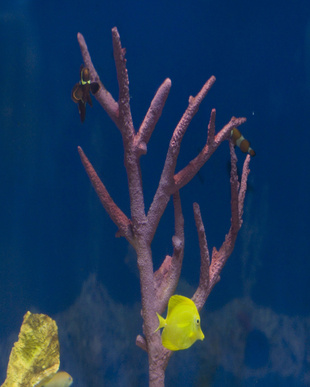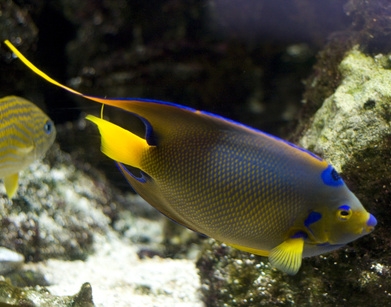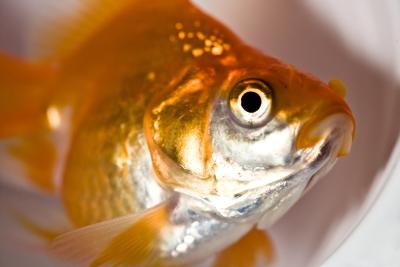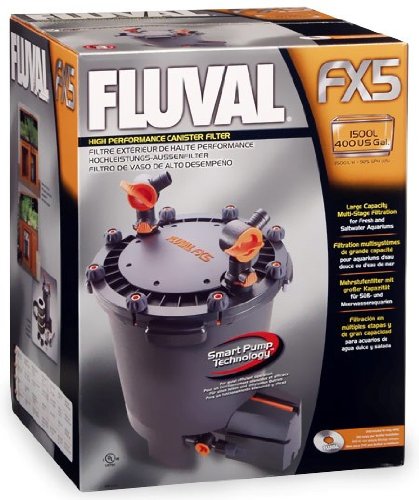
 Credit: http://www.flickr.com/photos/pdeonarain/2944004647/sizes/s/in/photostream/
Credit: http://www.flickr.com/photos/pdeonarain/2944004647/sizes/s/in/photostream/
When I was nine or ten my family bought me a 15 gallon aquarium kit for Christmas. Not long after that we moved to the city where I started hanging out at a local aquarium store in the summer. After a week of being there EVERYDAY the owner asked me if I would like a job since I was there anyhow. My passion for saltwater fish tanks now had its own funding! I took most of my paycheque from that first job in credit to feed my growing tropical and marine fish hobby.
In fairly short order I had aquariums in three or four rooms of the house with upwards of fifteen fish tanks at one point. I loved the vibrant colors and variety of species available for saltwater fish tanks. My collection had a fair bit of variety including clownfish, damselfish, gobies and yellow tangs. I was very fond of invertebrates --especially crab and shrimp. Not to mention damselfish and gobies!
When I was selecting my aquarium I decided bigger was better. If anything went wrong with my water quality or temperature it would have less impact in a larger tank. All of my aquariums both freshwater and saltwater were all glass. The acrylic tanks though very nice looking were extremely expensive at the time.
One of the first things I learned was that marine fish differed from freshwater tropical fish because you need to monitor your water quality more. With marine fish specific gravity (salinity) is obviously very important as water evaporates it changes the salinity of a saltwater fish tank. I had to pay special attention to the ammonia, nitrate and nitrite levels also. Over burdening the fish tank can cause large spikes in the ammonia cycle. Another thing I always made sure of was the sea salt I bought had the proper trace elements in it, otherwise I used an additive.
I used crushed coral as my substrate at the time most people used under gravel filters with saltwater aquaria. These days I believe overflow systems and such are much more common, utilizing a lot of biological filtration. That was the basic idea behind the under gravel filters promoting aerobic bacteria to grow in the crushed coral to break down waste. In addition to the under gravel filter system I used an external filter utilizing a foam and activated carbon insert.
As I had invertebrates present including carpet anemone making sure I had full spectrum lighting available was important. I always used a plastic filter under the light as glass filters out UV light.
I still find myself lingering at the saltwater fish tanks in pet stores. Once you are bitten by the marine fish bug you never recover. I hope you enjoyed this fishy tale.
 Different Kinds of Fish for Aquariums
Different Kinds of Fish for Aquariums
Different Kinds of Fish for Aquariums
Different Kinds of Fish for Aquariums
 Signs of a Sick Fish
Signs of a Sick Fish
Signs of a Sick F
Signs of a Sick Fish
Signs of a Sick Fish
Signs of a Sick F
 How to Painlessly Kill a Fish
How to Painlessly Kill a Fish
How to P
How to Painlessly Kill a Fish
How to Painlessly Kill a Fish
How to P
 Facets To Consider When Choosing A Cruise Rental
Sbiten is made at different ways, together non-alcoholic a
Facets To Consider When Choosing A Cruise Rental
Sbiten is made at different ways, together non-alcoholic a
 Fluval Aquarium Filters
Fluval Fish Tank Filters for Your AquariumIn t
Fluval Aquarium Filters
Fluval Fish Tank Filters for Your AquariumIn t
Copyright © 2005-2016 Pet Information All Rights Reserved
Contact us: www162date@outlook.com